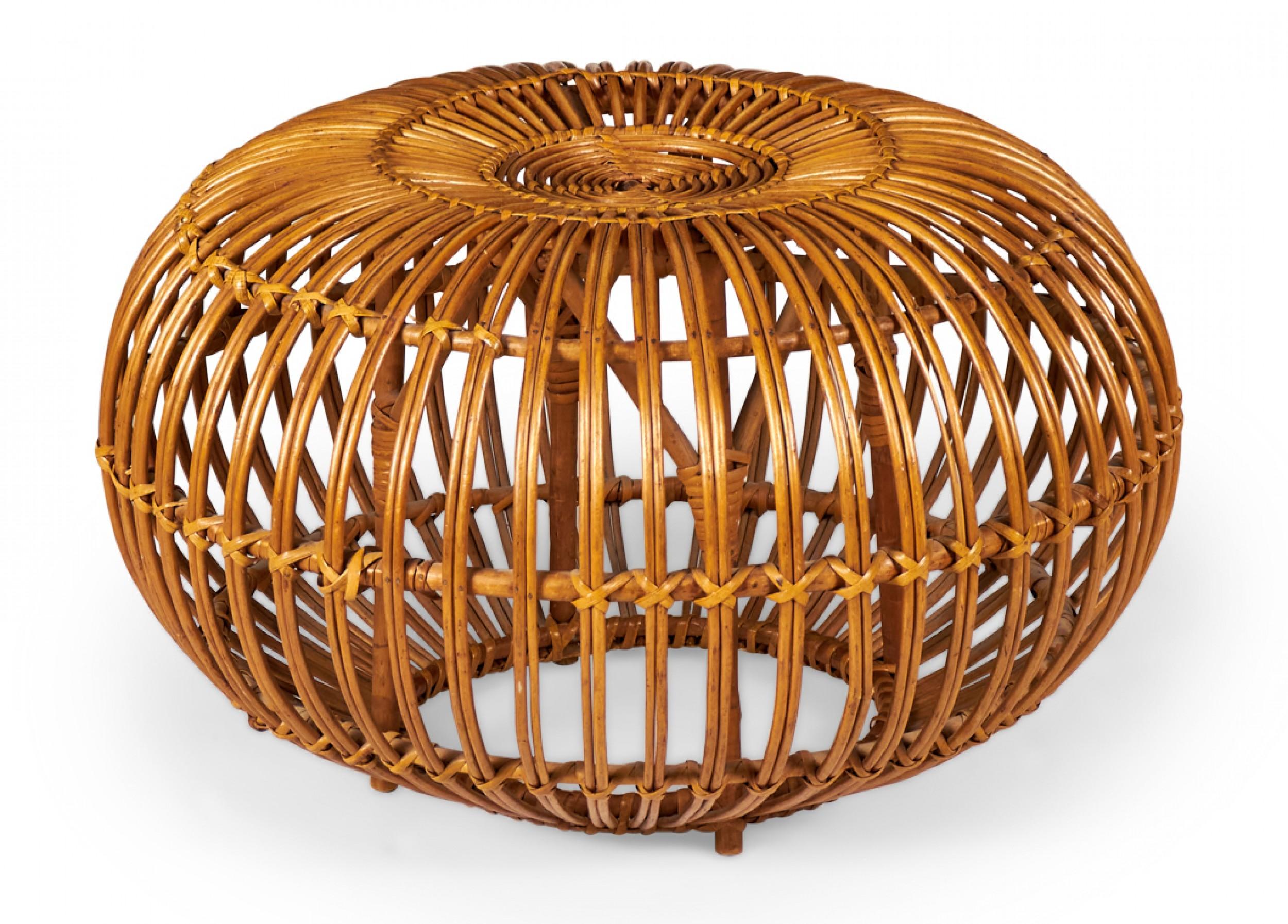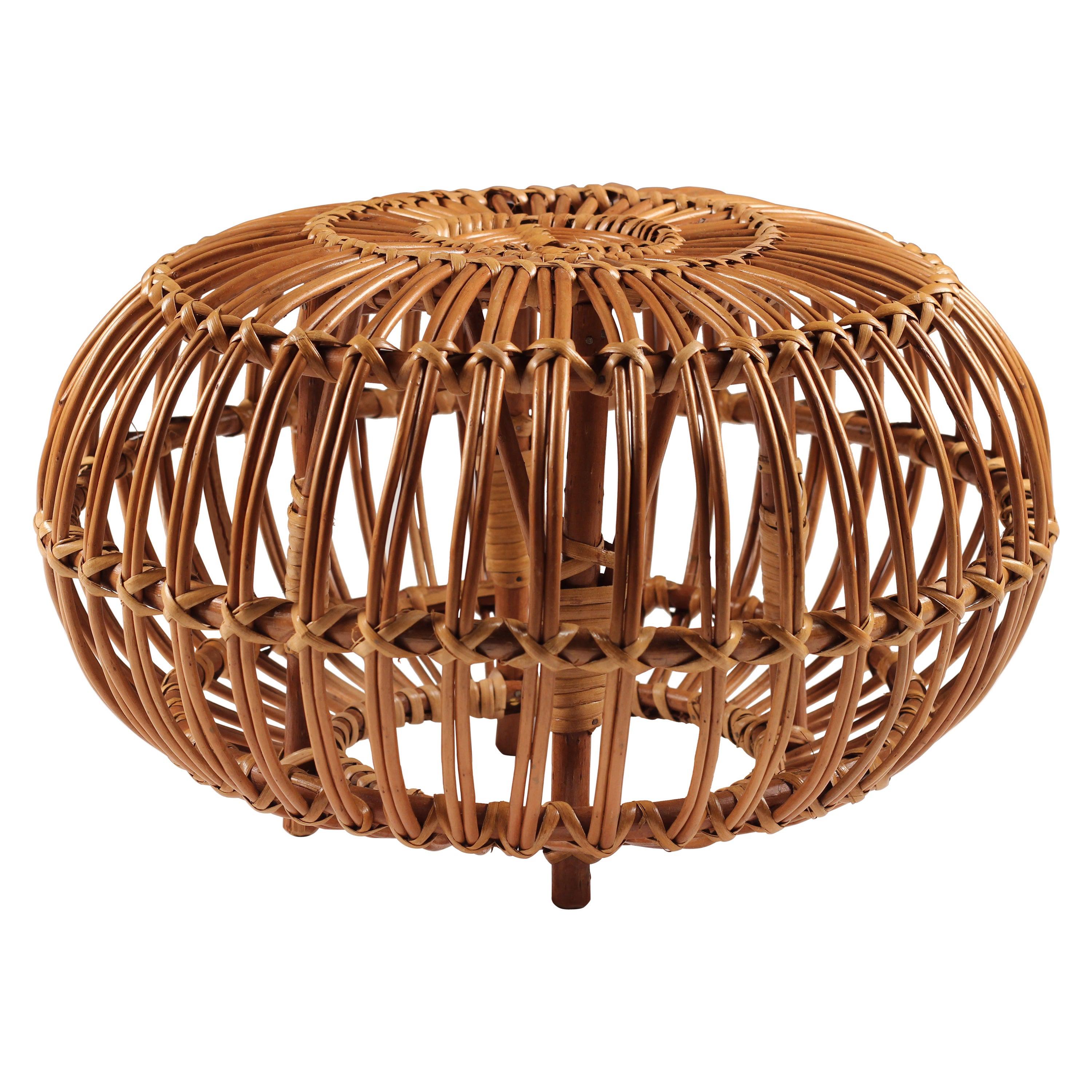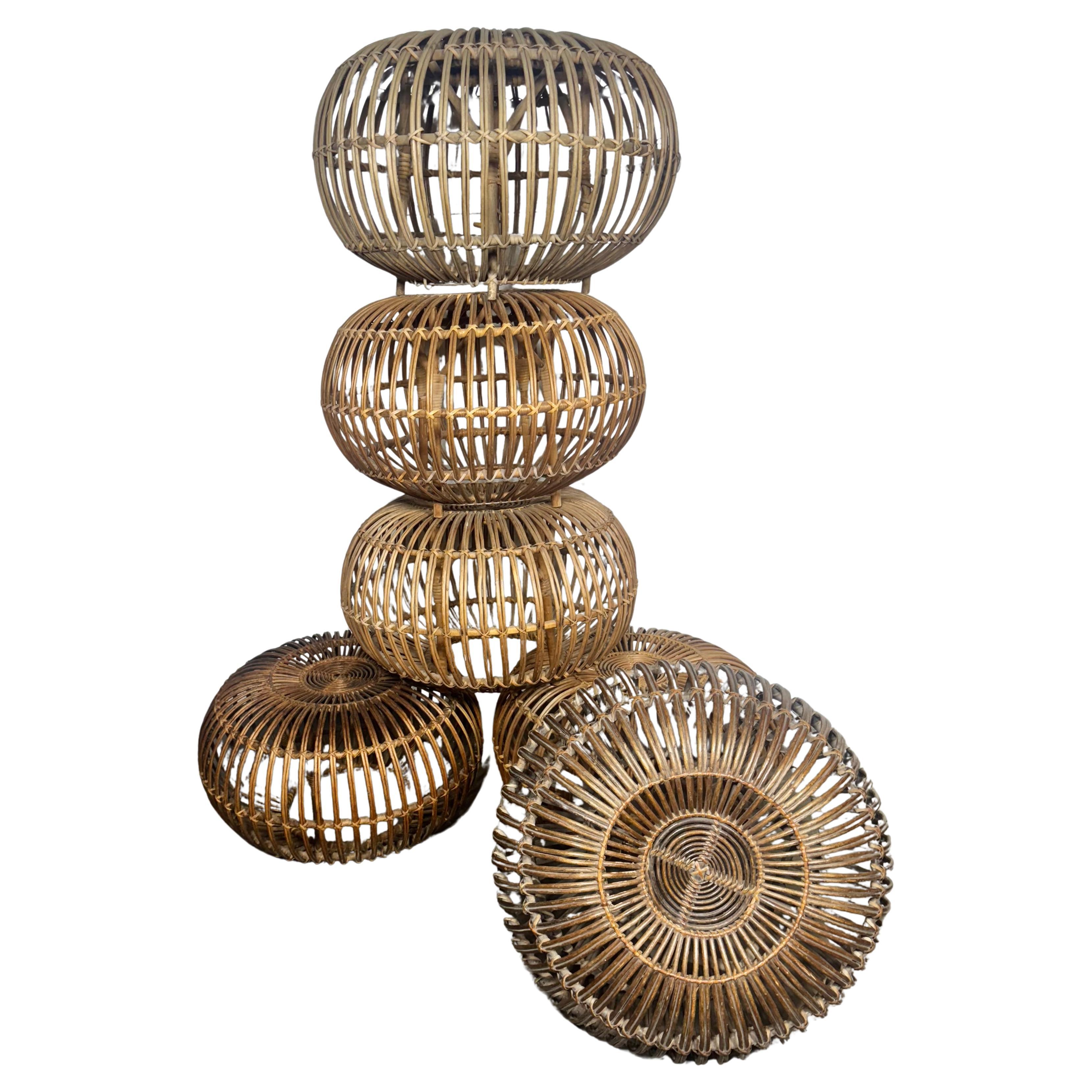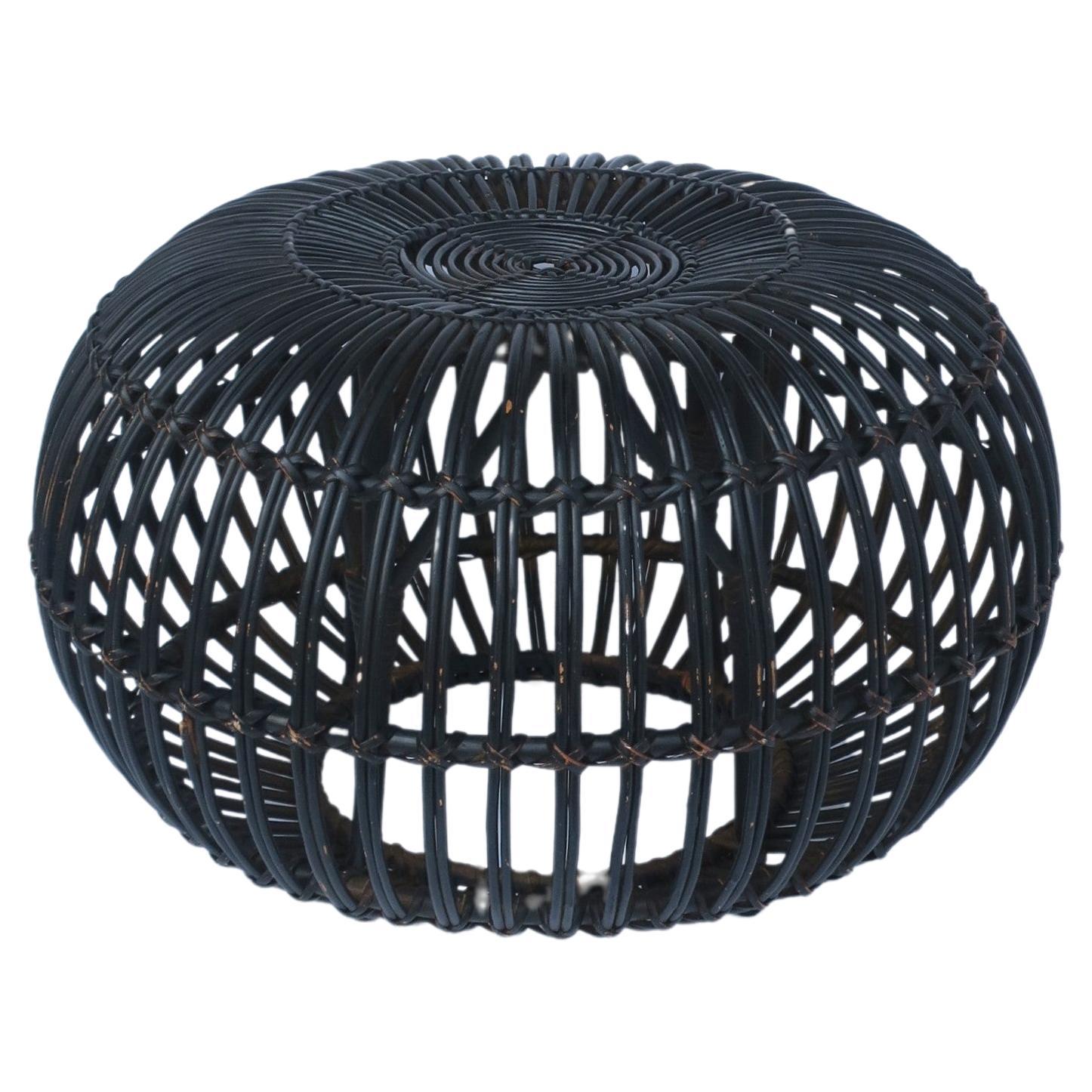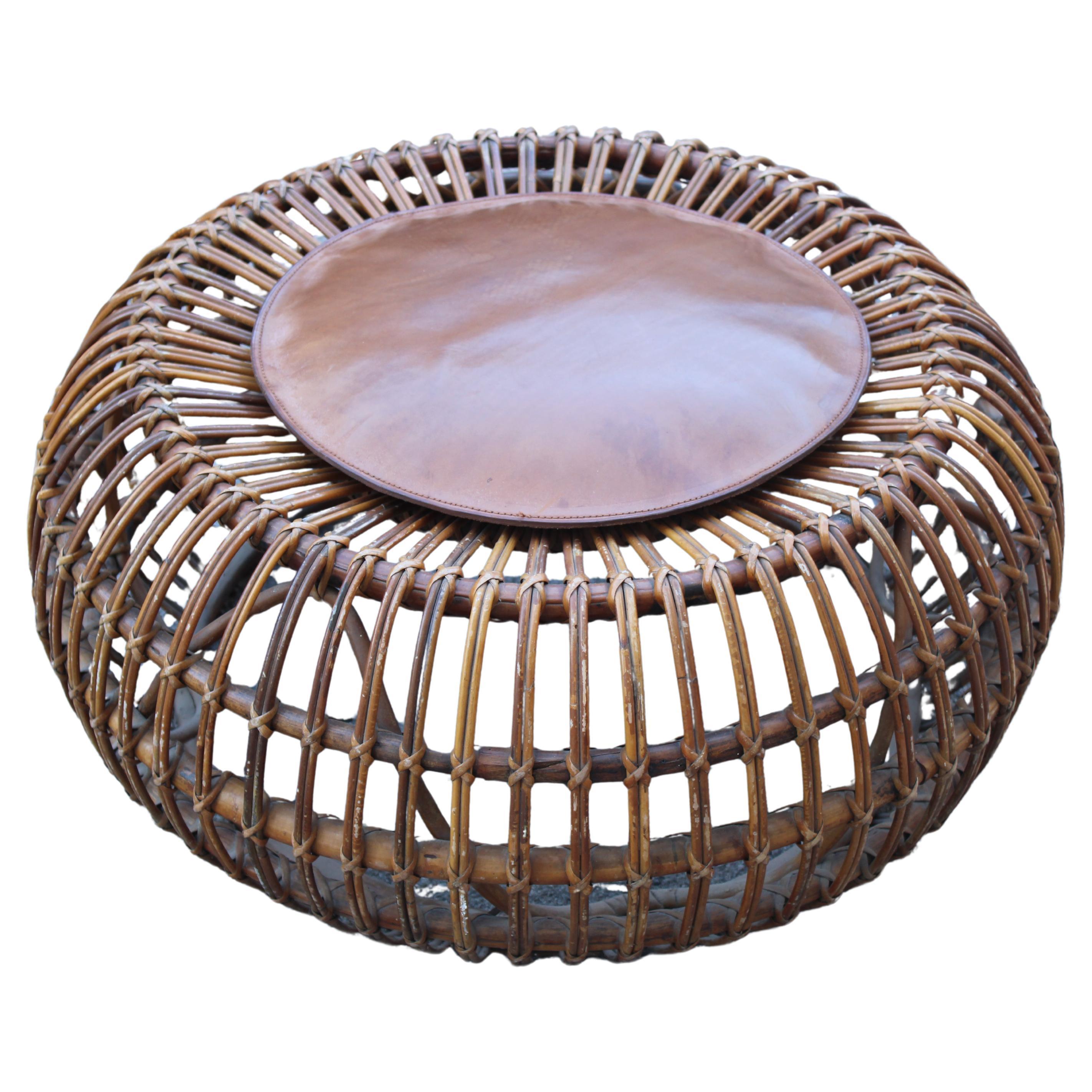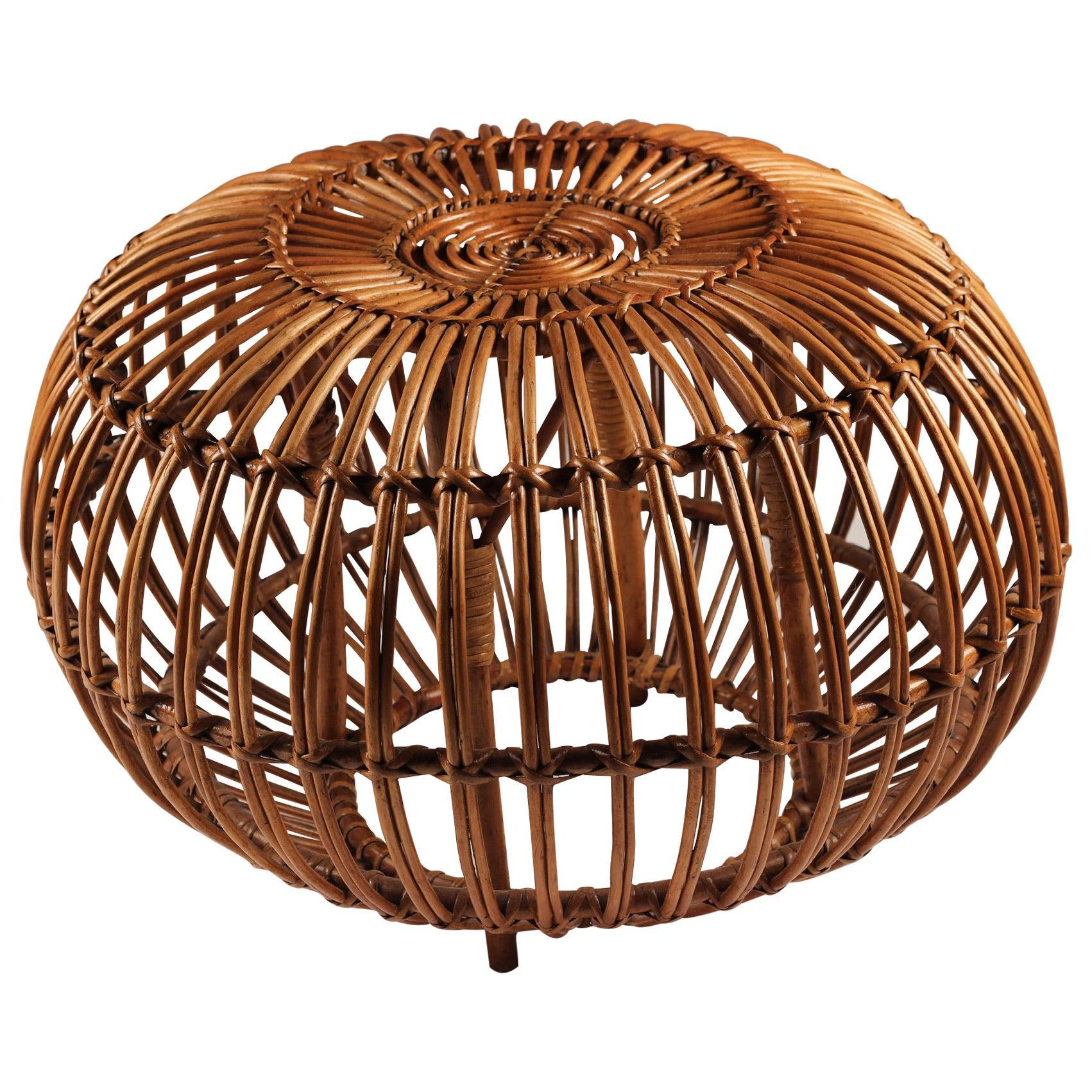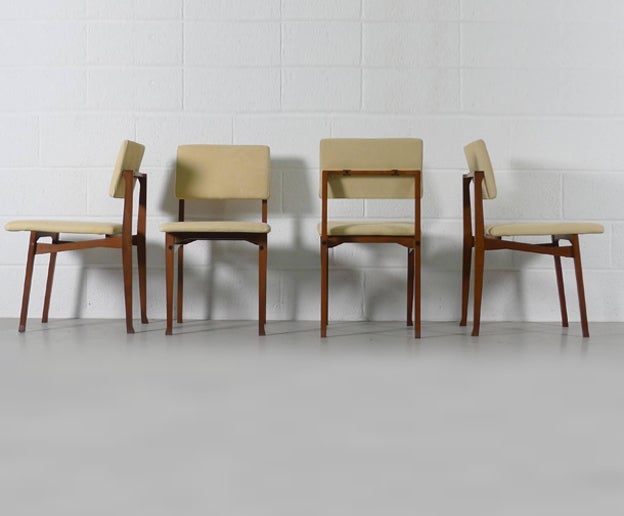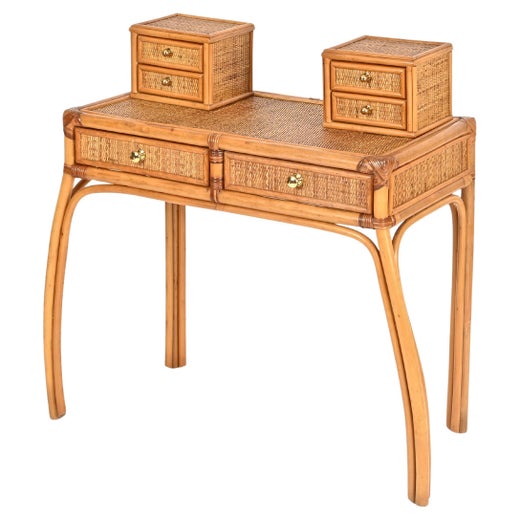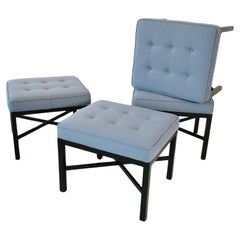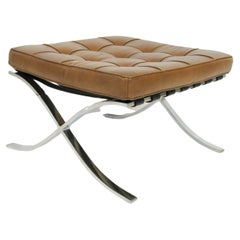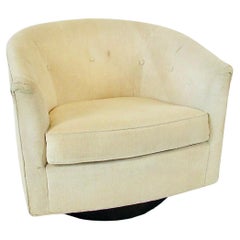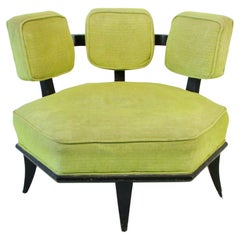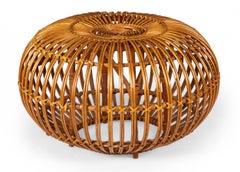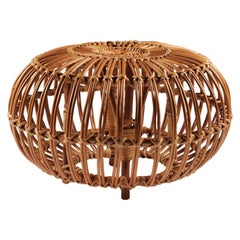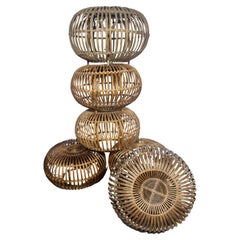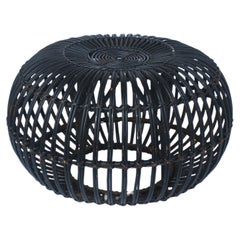Franco Albini Split Reed ottoman or pouf
About the Item
- Creator:Franco Albini (Designer)
- Design:
- Dimensions:Height: 14.5 in (36.83 cm)Diameter: 24 in (60.96 cm)Seat Height: 14.5 in (36.83 cm)
- Style:Mid-Century Modern (Of the Period)
- Materials and Techniques:
- Place of Origin:
- Period:
- Date of Manufacture:1964
- Condition:Wear consistent with age and use. Fine condition throughout .
- Seller Location:Ferndale, MI
- Reference Number:1stDibs: LU848236925522
Luisa Chair
After working for approximately 15 years through several prototypes of the design (one of which was manufactured by Knoll in the late 1940s), the Italian designer, architect and urban planner Franco Albini (1905–77) finished what is considered to be a masterpiece: the Luisa chair. The dignified armchair is upholstered in warm red fabric and named after Luisa Colombini, Albini’s personal assistant and secretary of two decades. Lightweight and initially available in teak, mahogany and beech, the definitive version of the Luisa chair was put into production by Poggi in 1955.
The Luisa is often compared to the similarly minimal and sturdy Leggera chair conceived by like-minded rationalist architect and designer Giò Ponti, under whom Albini apprenticed after receiving his degree in architecture from the Polytechnic University of Milan in 1929.
Not unlike Ponti’s work, Albini’s designs often merged traditional Italian craftsmanship with the modernist flourishes that had occupied Italian rationalists. It was this blend of functionalism and style that earned Albini numerous awards, including several Compasso d’Oro prizes, a prestigious Italian award for excellence in industrial design. His first Compasso d’Oro was for the Luisa chair, which is part of the permanent collection at the Museum of Modern Art in New York and is still manufactured by Cassina.
Franco Albini
While working under the polymath Gio Ponti — arguably the most important figure in 20th-century Italian modernism — furniture designer Franco Albini nurtured a love for modern forms combined with traditional craft techniques.
Albini is widely known for working with organic materials such as rattan and cane for his chairs and other seating, but he also played a pivotal role in the Italian rationalist movement of the early 20th century, which saw architects and furniture makers applying a strict emphasis on geometry in their work. Rationalists drew on Ancient Roman architecture but rejected ornament, much in the way that Le Corbusier and celebrated Bauhaus figures such as Ludwig Mies van der Rohe had in their modernist furniture.
Albini received his degree in architecture from the Polytechnic University of Milan in 1929, and, in 1931, he founded his practice in Milan, where he tackled workers’ housing and other reconstruction projects. A gifted urban planner, he also developed the Palazzo Bianco, Palazzo Rosso and Tesoro di San Lorenzo museums in Genoa. While Albini is revered for his Margherita chair — a Triennale Milano award winner created for Bonacina in 1951 — he also collaborated with manufacturers Poggi and Cassina in the 1940s on seating, tables and more that embodied his artistic vision. Of that mid-century work, the one piece that perhaps best captures this vision is the iconic Luisa chair.
With its cherry red upholstery and sinuous wooden legs that seem to float aboveground, the Luisa is a genuine masterpiece. It is also a testament to Albini’s perfectionism, as it endured several prototypes — including one made by Knoll in the late 1940s — and took approximately 15 years to design. Poggi launched the final version of the armchair in 1955, earning Albini the prestigious Compasso d’Oro from Italy’s Association for Industrial Design. It is produced today by Cassina. Albini named the chair for someone who likely saw the process firsthand: his personal secretary of two decades, Luisa Colombini.
Find vintage Franco Albini furniture on 1stDibs.
- ShippingRetrieving quote...Shipping from: Ferndale, MI
- Return Policy
More From This Seller
View AllMid-20th Century American Mid-Century Modern Stools
Upholstery, Wood
Mid-20th Century American Mid-Century Modern Footstools
Stainless Steel
Mid-20th Century American Mid-Century Modern Lounge Chairs
Upholstery, Wood
Mid-20th Century American Mid-Century Modern Lounge Chairs
Wood
Mid-20th Century American Hollywood Regency Footstools
Upholstery
Mid-20th Century Danish Mid-Century Modern Lounge Chairs
Teak
You May Also Like
20th Century Italian Mid-Century Modern Ottomans and Poufs
Wood, Rattan
Mid-20th Century Italian Mid-Century Modern Stools
Wicker
Mid-20th Century Italian Mid-Century Modern Ottomans and Poufs
Wicker, Rattan, Reed
Mid-20th Century Italian Mid-Century Modern Ottomans and Poufs
Wicker, Rattan
Vintage 1950s Italian Mid-Century Modern Ottomans and Poufs
Bamboo
Mid-20th Century Italian Mid-Century Modern Stools
Wicker
